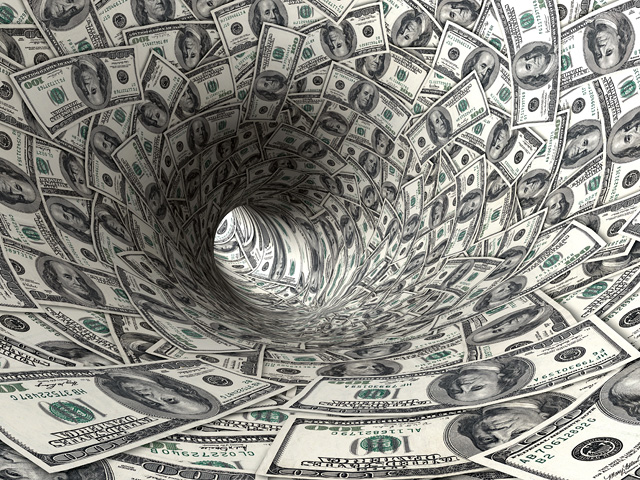Some disasters strike suddenly; think earthquake, tornado, or heart attack. In contrast, other disasters happen slowly, silently: termites quietly eating a house or months of sunny weather creating a drought.
America’s current debt of $36.2 trillion has been one of those quiet catastrophes in the making. It’s neither an exciting nor a hot-button issue, so it’s usually ignored. Despite much media generally ignoring the issue or dismissing its dangers, as posted here, here and here, The Roanoke Star has been publishing news and commentary about this growing crisis.
Moreover, The Roanoke Star has pointed out that the national debt has continued to explode regardless of which party controlled the White House or Congress.
Whereas most families and businesses must make and stick to a budget, the US government does not need to, because it can keep borrowing or printing money.
On August 1, Fitch ratings, an international credit ratings agency based in New York and London, downgraded the US government’s credit rating from AAA to AA+. Fitch is one of the “Big Three credit rating agencies” along with Moody’s and Standard & Poor’s.
In an announcement explaining its move, Fitch cited “a steady deterioration in standards of governance.”
Fitch pointed to “the expected fiscal deterioration over the next three years, a high and growing general government debt burden, and the erosion of governance relative to ‘AA’ and ‘AAA’ rated peers over the last two decades that has manifested in repeated debt limit standoffs and last-minute resolutions.”
Fitch claimed their action was not just a result of the latest debt ceiling standoff earlier this summer but rather “a steady deterioration in standards of governance over the last 20 years” regarding “fiscal and debt matters.”
As a silver lining, Fitch did add “outlook stable.”
This was only the second time in history the American government has had its credit score cut. The first time came in 2011, during the first Obama administration, when there was a tense stand-off regarding raising the debt ceiling and Standard & Poor’s downgraded the credit rating. At that time, the US stock market took a heavy hit, as the US economy and dollar have been international “safe havens” since the end of WWII.
As explained here on June 6, Virginia’s two US Senators, Democrats Mark Warner and Tim Kaine, voted to increase the debt ceiling which was then $31.8 trillion and also hire 87,000 new IRS agents. Despite House GOP leader Kevin McCarthy pushing to raise the debt at that time, Reps. Morgan Griffith (Ninth District), Ben Cline (Sixth District), and Bob Good (Fifth District) representing Central and Western Virginia all bucked Party bosses and voted no.

However, with overwhelming Democrat and significant GOP support, the last-minute deal was passed to actually cancel any debt ceiling until January 2025, intentionally after the 2024 elections, and essentially allow virtually limitless debt spending until then.
Making fun of the government’s lack of fiscal discipline and feckless leadership, the satire site Babylon Bee taunted, “Report: U.S. Will Now Need A Co-Signer To Purchase A Used Ford Taurus.”
Most people are feeling the effects of higher inflation at the gas pump, grocery store, and almost everywhere else. What many may not realize is, the continual debt spending and printing of money out of thin air makes each dollar worth less, and that fuels inflation because there are more dollars chasing fewer goods and services.
Sen. Kaine, Pres. Biden, and Reps. Cline, Good, and Griffith are all up for re-election in 2024.
–Scott Dreyer

